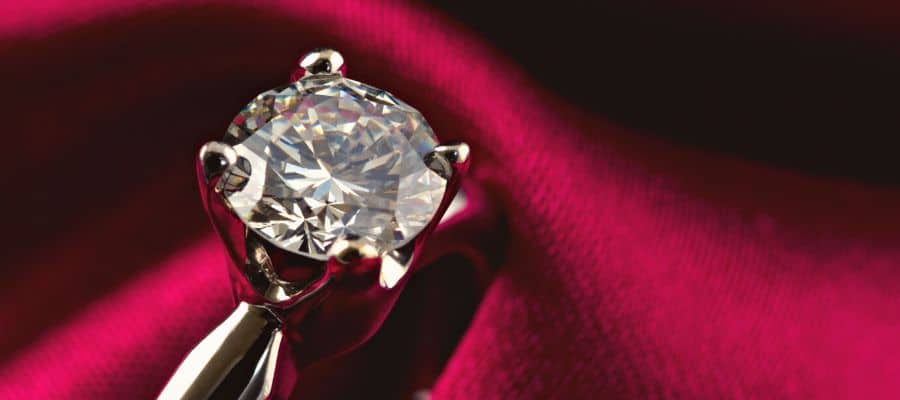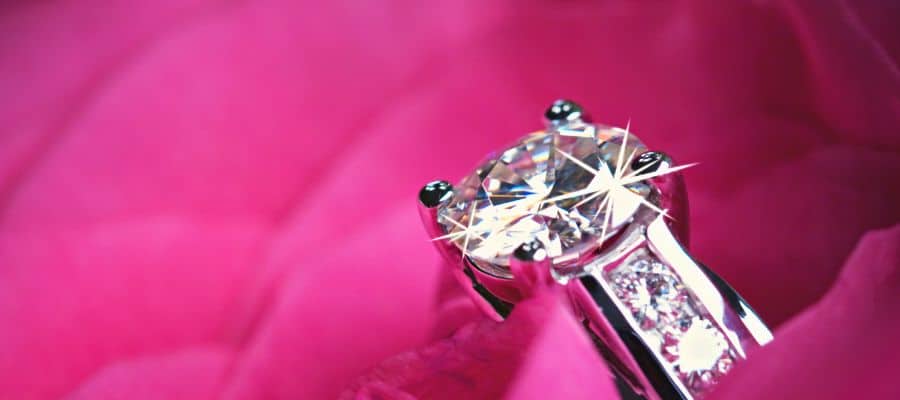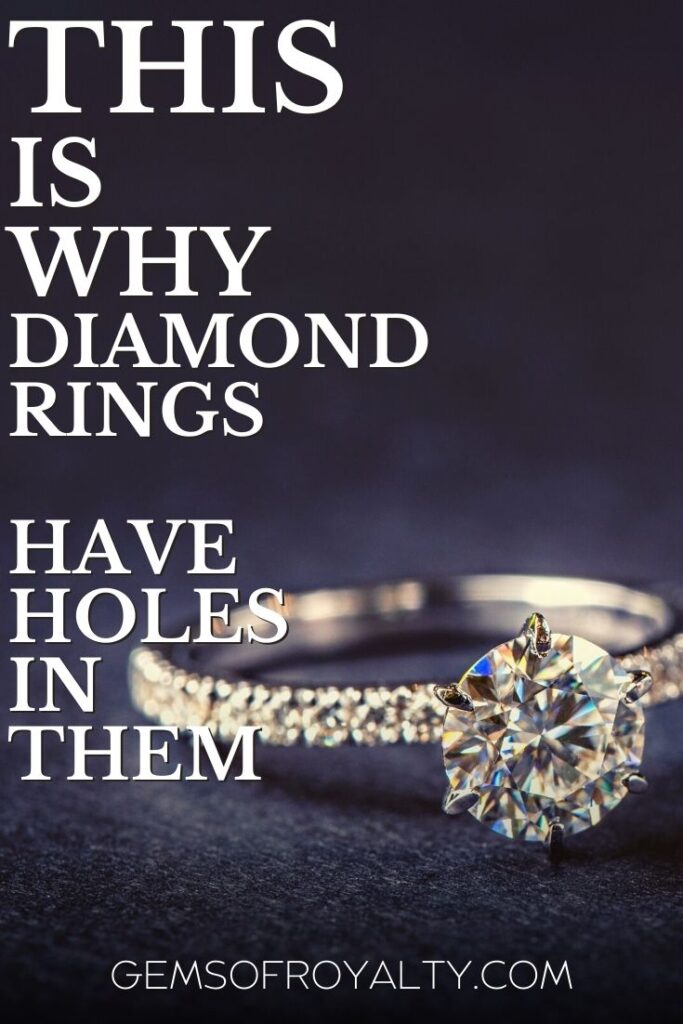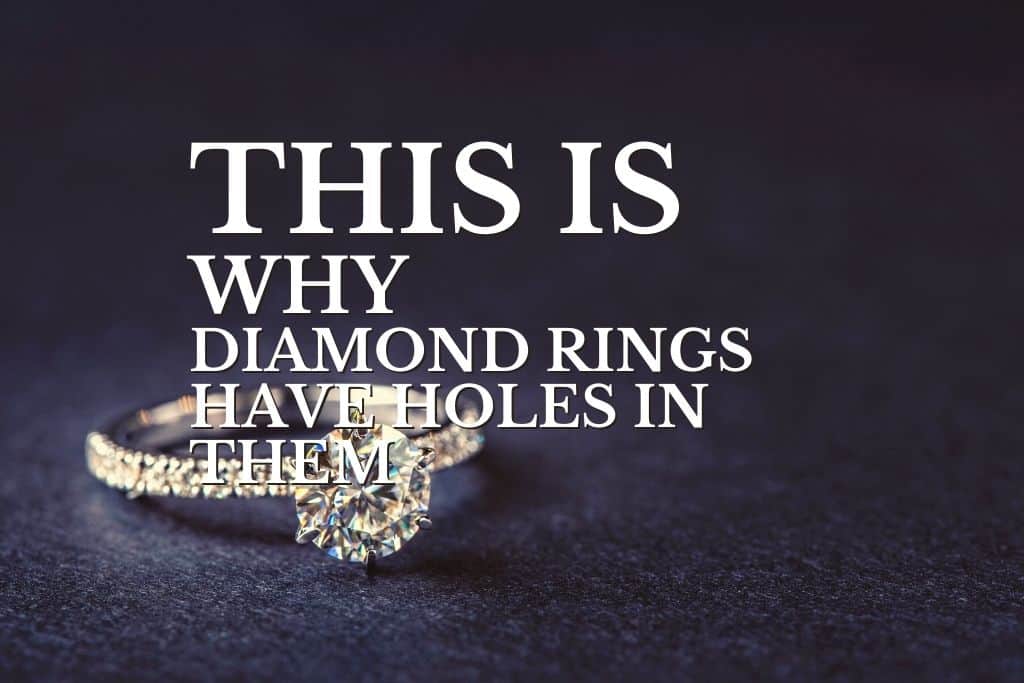I recently purchased a diamond ring, and while I was inspecting it, I noticed that it had a few holes underneath the shank in close proximity to the diamond. I assumed this was part of the design, but I saw other rings also had them. Why do diamond rings have holes in them?
Diamond rings have holes in them to allow air to pass through and evaporate any sweat on your finger. This helps keep the ring comfortable to wear. Additionally, these holes grant jewelers easy access to the back of the diamond should it need to be repaired or cleaned of debris.
Breathing holes are a unique feature often seen in diamond rings. In this article, I’ll explore why diamond rings have holes in them and whether or not they’re worth requesting in your jewelry design the next time you have a diamond ring custom-made.
Are Holes Necessary for Diamond Rings?

Holes are necessary for diamond rings. Aside from making the ring more comfortable to wear, they make it easy for you to clean your ring and prevent the buildup of sweat, oil, and debris.
With the above in mind, let’s examine the top three reasons why a diamond ring might have holes in its shank.
- Holes make it easier to clean your ring. The holes in the ring give your jeweler easier access to every part of your setting. This also ensures that if you clean your ring using an ultrasonic cleaner or another DIY method, the cleaning solution will reach every nook and cranny of the ring.
- Holes wick away sweat. Holes can make it more comfortable for you to wear your diamond ring because they help sweat evaporate instead of accumulating on your finger. As a result, your finger won’t feel wet even after wearing the ring for long periods.
- Holes prevent damage to the diamond. Holes in diamond rings can prevent damage to the tip of the diamond. During the ring assembly, when the lowest parts of the diamond, which are known as the pavilion and cutlet, make contact with the ring’s metal shank, they could break or become damaged. The holes prevent this from happening.
It’s worth mentioning that diamonds do not need air or any type of ventilation. They won’t expand or contract depending on the temperature, air, or light, and they don’t require air through these breathing holes. The holes are there for your benefit and to maintain the good condition of your ring. A diamond ring made without breathing holes can still be just as beautiful and meaningful to the wearer.
Do Holes Make Diamond Rings Shine and Sparkle More?

Holes do not make diamond rings shine or sparkle more. The holes are underneath the ring’s shank, which makes direct contact with your finger, so they wouldn’t allow more light to reach the diamond and make them shine.
Without enough light, a diamond won’t be able to sparkle. What makes it sparkle, however, is not its breathing holes but refraction. This is when light bounces around the inside of the diamond, which reaches your eye when the stone is moving. Its brightness is caused by refraction and reflection.
Essentially, how a diamond is cut is what makes it shine or lack dazzle. When light reaches the diamond from above, it enters the diamond and hits one face of the stone and another before exiting, as Science ABC reports. This is reflection, but it requires the diamond to be cut deeply enough to work.
You don’t want the diamond to be cut too shallow, or else the light will get released from the bottom. By comparison, if it has a very deep cut, the light will get emitted from the side, causing the ring to look lackluster.
Other holes that are incorporated into the ring design can help to make the diamond shine and sparkle, but these shouldn’t be confused with breathing holes. Their presence depends on the type of jewelry setting. For example, a cathedral setting enables your diamond to sit higher, and it might have a hole on the side that helps to encourage more light to strike the diamond.
Are Breathing Holes Proof That Diamonds Are Real?

Breathing holes are not proof that diamonds are real. In fact, even fake diamonds can have these holes in their design. You should look for other features that indicate a diamond is real, such as if it fogs up quickly but doesn’t stay foggy.
To do the diamond-authenticity test, breathe on the stone and check that it fogs up quickly. This is done to test the diamond for thermal conductivity. If a diamond is real, it won’t fog up for longer than a few seconds. It’s a good idea to fog up a fake stone at the same time so that you can compare it to the diamond.
Another test you can do is to get a magnifying glass and study the stone’s facet edges. Here’s what to do:
- Look at the edges of the diamond where the facets meet. The facets are the flat surfaces on the geometric diamond shape.
- Check if the facets are worn away by friction. Polished diamonds will generally retain their shine even after being subjected to friction, whereas fake stones tend to dull quickly in comparison.
If the surface is highly abraded, this indicates that the stone is a softer material that’s been damaged. Therefore, what you have isn’t a rock-hard diamond, as the International Gem Society reports.
Final Thoughts
Diamond rings have holes in them to make the assembly of the ring safer, preventing damage to the diamond before you can wear it on your finger. However, there are other reasons why your diamond ring might have holes in it, such as:
- They allow more access to the ring so you or your jeweler can clean it thoroughly.
- They allow perspiration on your finger to evaporate quickly, making the ring more comfortable to wear.
Before requesting breathing holes in your next jewelry design, remember that breathing holes will not make your diamond look shiner.
If you found this article useful, make sure you save this pin below to your Jewelry board.


